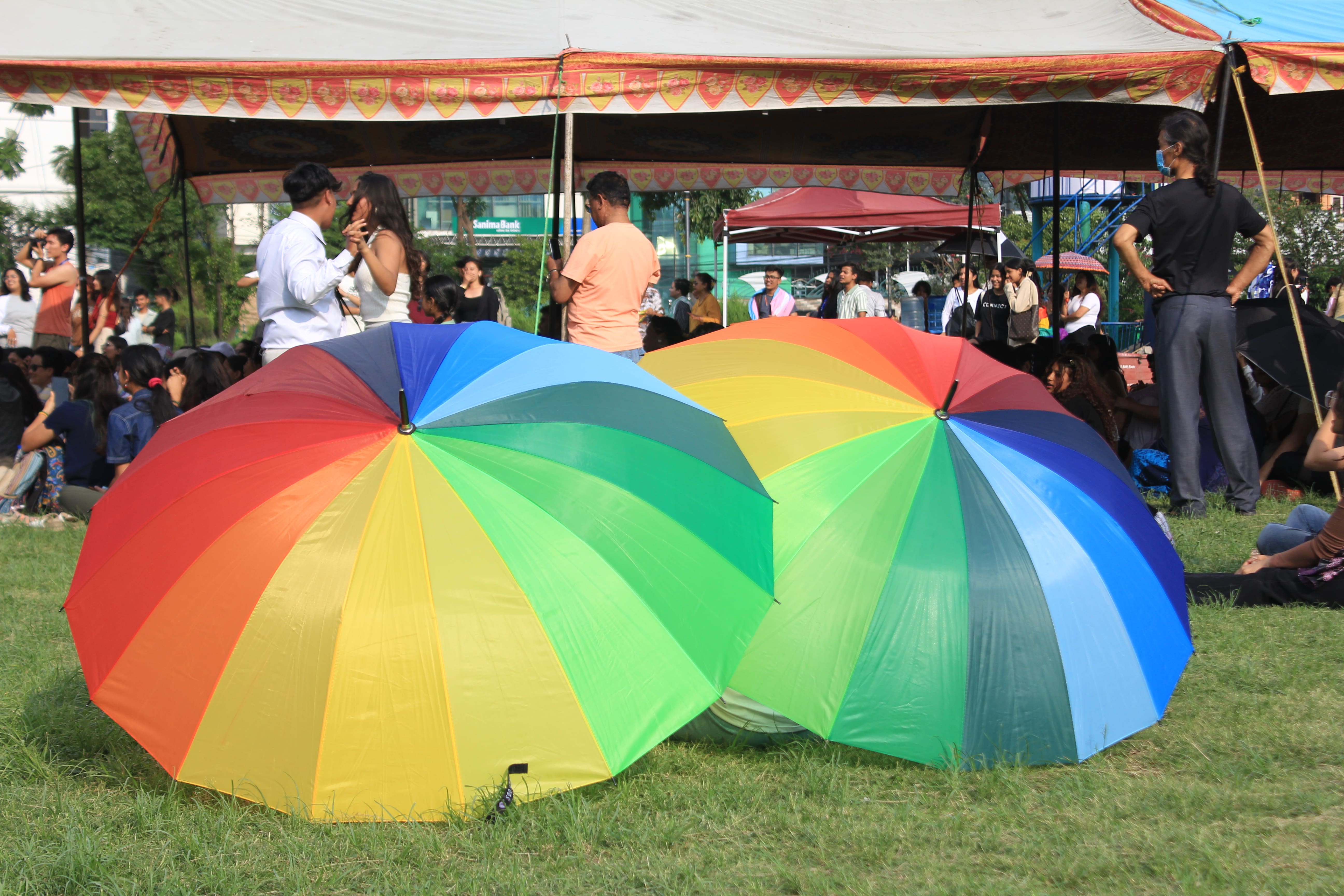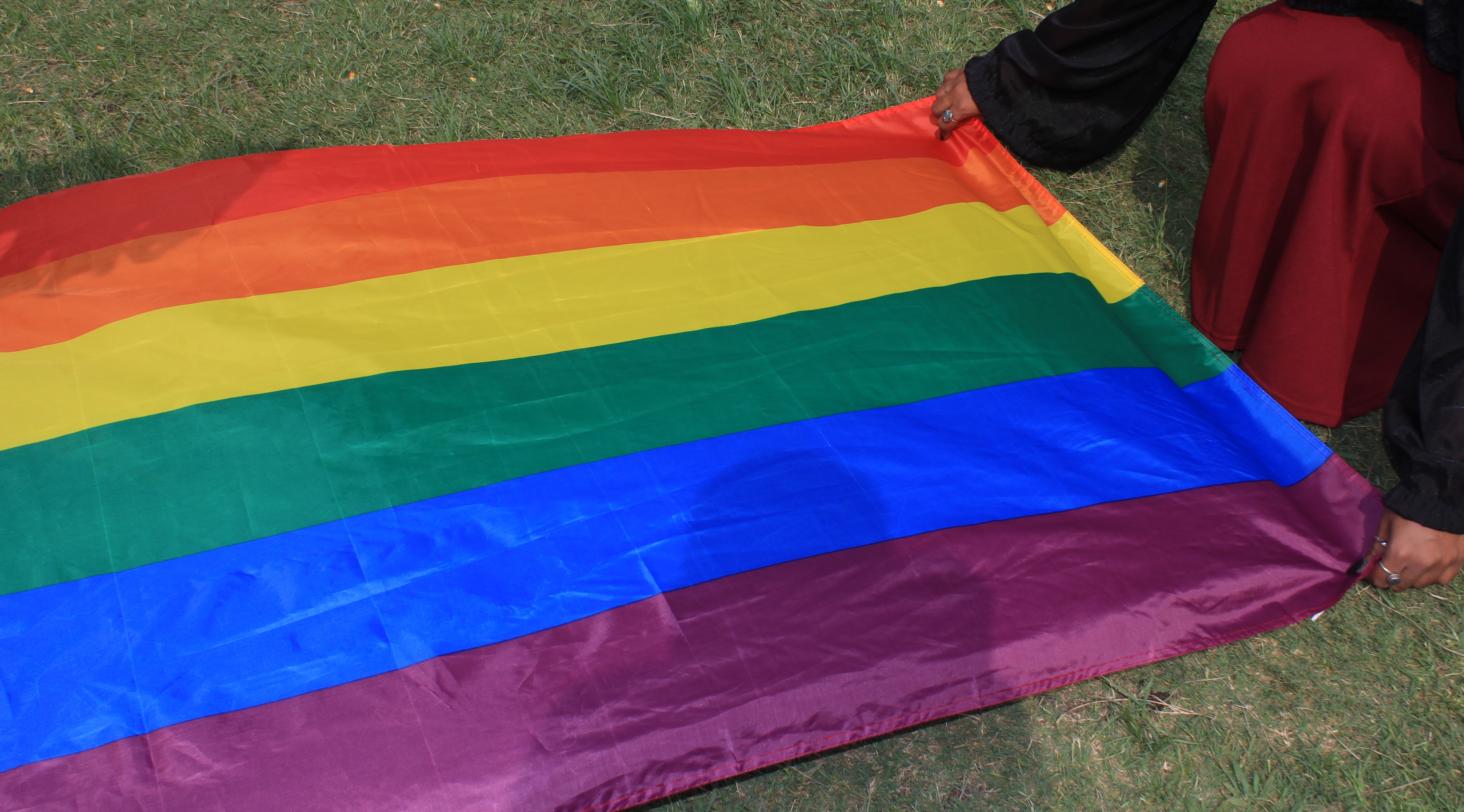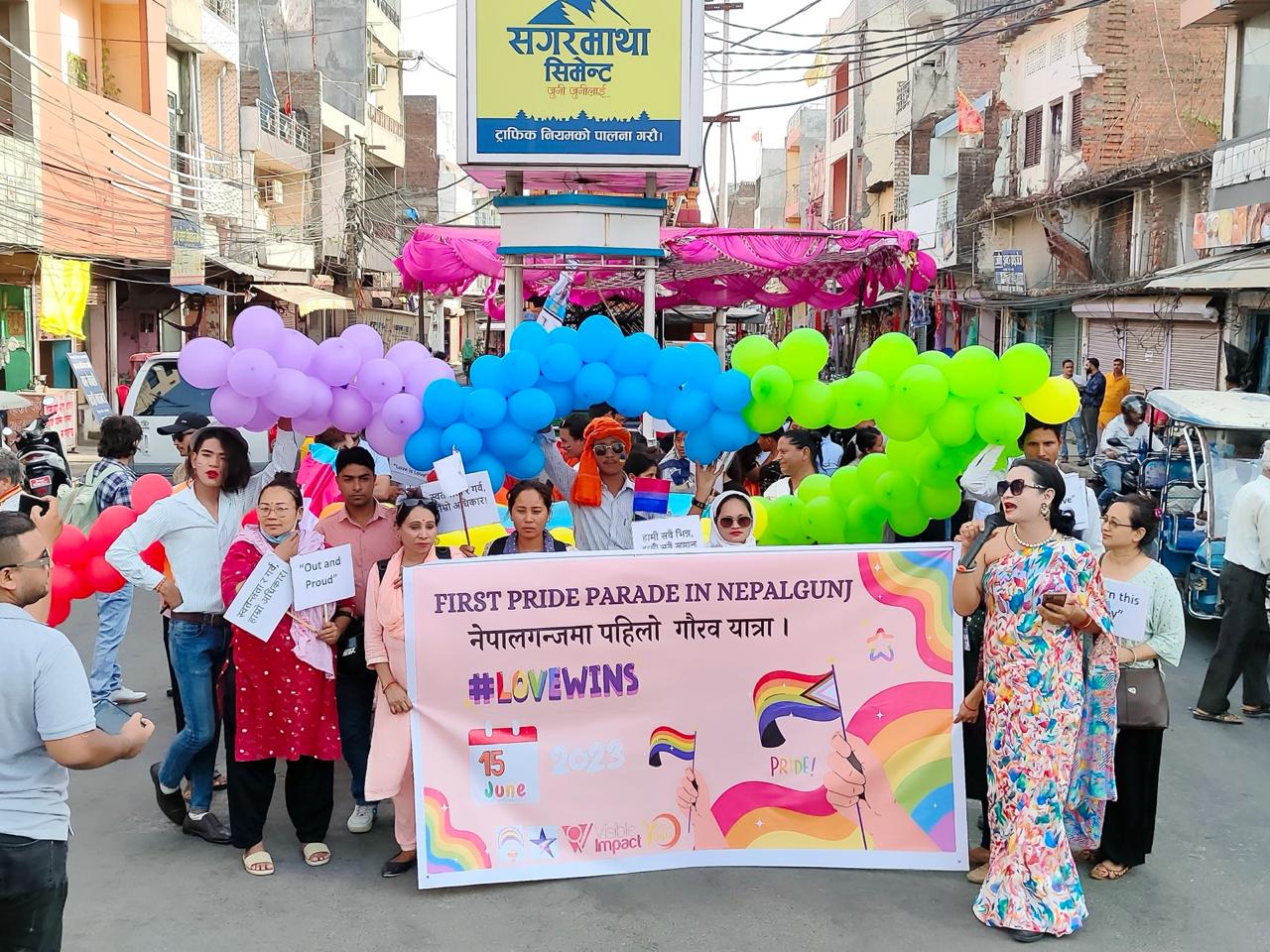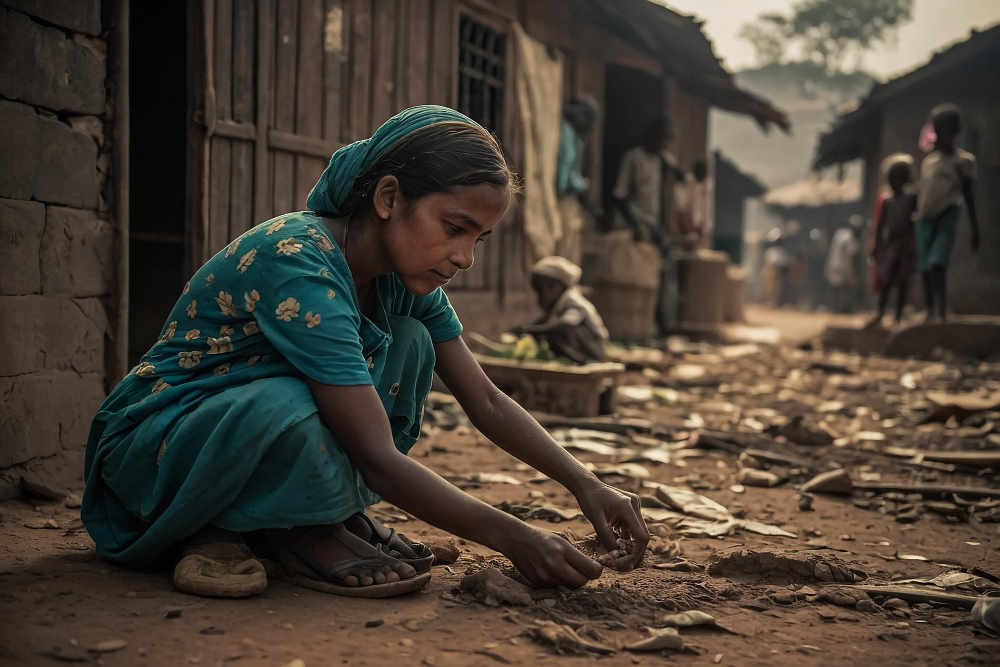Nepal's Pride Parade, vital for queer visibility and belonging, is threatened by funding cuts, yet remains crucial for LGBTQIA+ rights.

June 30, 2025
Kathmandu, Nepal

Pride Flag at the 2025 Pride Parade 2025 Kathmandu
Every year, the Pride Parade in Kathmandu becomes a moment of visibility and solidarity for Nepal's queer community. For some, it’s a celebration; for others, it’s a rare chance to feel seen and heard-now that space is vanishing under the weight of funding cuts and rising hostility.
In this year’s pride parade held in Kathmandu, two young attendees, both navigating their own journeys in a society that still often demands silence, shared their experiences. “I love it when we come together and enjoy the event. This is my second year attending the Pride parade,” said Dorje Lakpa, a 22-year-old gay man.
Dikshya Panta, a 27-year-old bisexual woman working in the corporate sector, echoed that sentiment. “I don’t have a queer friend circle in my everyday life. This is the space where I get to connect with and see other queer people. That’s why I feel a sense of belonging and choose to attend the Pride parade.”
For both of them, Pride is more than a public event—it's a personal space, a momentary relief, and a declaration of existence in a world that often asks them to hide.
In the recent two decades, the queer community in Nepal has shown its presence in public, government, and even in parliament. This visibility has been made possible by the relentless activism and efforts of civil society organizations advocating for queer rights.
The Pride Parade is a product of this activism. Each year, the streets of Kathmandu come alive with color, music, and quiet defiance. More than a celebration, Pride is a lifeline—offering visibility, solidarity, and a safe space for queer youth to exist without fear.
In a society where acceptance is still growing and legal rights often fall short in practice, the parade is both a protest and a promise. It is a commitment to building an inclusive Nepal that affirms that love, identity, and dignity are rights, not privileges.
While Kathmandu remains the focal point where the pride flag is raised each year, it's vital to extend this visibility to other regions of Nepal—especially for queer individuals outside the spotlight who still long for safe and affirming spaces in their communities, becoming a part of a broader continuum across other cities.
For instance, in 2023, Nepalgunj hosted its own Pride Parade. Pareena Chaudhary, program coordinator at the queer-led organization Western Star Nepal, noted that Pride events were increasingly being celebrated across Nepal.

Participants commencing the rally in the first-ever pride parade in Nepalgunj in 2023
Photo: Manoroma
The Nepalgunj Sub-metropolitan even provided public space and security for the event, showcasing a positive relationship between local queer groups and government authorities. Youth from various communities, local NGOs, and stakeholders took part in what became a vibrant, affirming gathering.
The pride parade event has been a platform or space for the queer community to celebrate their identity and a chance for them to claim their rights. That momentum, however, did not last. In 2025, such events—including in Kathmandu—did not take place.
Meanwhile, Panta reflected on how her experience of Pride has changed over the years. “The Pride parade doesn’t feel the same as in previous years. Maybe people our age have moved abroad, or maybe it just felt new and exciting to me in the beginning. I remember it was thrilling the first year I attended.”
For Lakpa, the sense of freedom is mixed with hesitation. “I come here thinking I’ll dance and sing, but the constant presence of cameras makes me feel hesitant. I’m afraid of being exposed in the media, and that ruins the fun for me.”
Despite these challenges, both stress the importance of Pride. “If not for spaces like this, I’d probably have to stay quiet in public out of fear of being judged. Events like the Pride Parade help us be our true selves—without having to distort our identity,” said Lakpa.

The second Pride parade in Nepalgunj
Photo: Manoroma
Even after this grand event, the pride parade has not been held in 2025.
The reasons are complex but alarming: lack of funding, the suspension of USAID support, and the ripple effects of the anti-gender narrative pushed by former U.S. President Donald Trump, who declared that there are only two genders and dismissed LGBTQIA+ identities as unnatural.
This political and financial backlash has left many local queer leaders—especially those previously supported by international donors—forced back into silence. Some have had to hide their pronouns or resume living under erased identities in public and professional settings. Without sustained funding, organizations have struggled to secure space, permits, and logistics, leaving Pride on indefinite pause.
And yet, Pride should not be reduced to a single parade or June, celebrated as Pride Month. It must spark deeper commitments.
Ultimately, making real strides for Nepal’s queer community require laws that fully recognize all gender identities and sexual orientations. Protection from discrimination must extend to workplaces, schools, and hospitals. It also means securing basic rights like marriage, inheritance, and adoption for queer individuals.
But legal change isn’t everything. We need visibility that’s genuine and daily—queer lives reflected in the media, schools, and public institutions. It’s about making their experiences normal, not just a token gesture.
It’s also incredibly important to have safe spaces right in our own neighborhoods, offering support and resources like community centers and mental health services in smaller towns and rural areas, making these places permanent havens, not just temporary ones.
And while standing up and protesting is crucial, we also need to create room for queer joy and healing. This means celebrating through art, culture, and dedicated spaces for love and happiness, not just focusing on survival.
Finally, we absolutely must embrace intersectionality and inclusion, lifting the voices of those often overlooked within the queer community itself – making sure that no one gets left behind in this important movement.

By sharing valuable information and sparking inspiration, we aim to foster growth, innovation and brighter opportunities for future generations.
Contact us